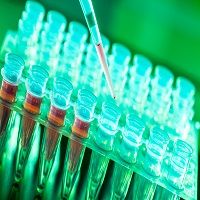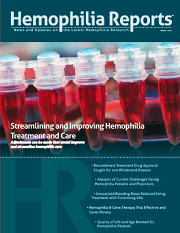Hemophilia B Gene Therapy Trial Effective and Saves Money
A gene therapy treatment for men with hemophilia B proved effective, and the researchers involved in the study estimate it saved $2.5 million for the trial's patients.

Hemophilia B can be treated with modified adeno-associated virus serotype 8 (AAV8) gene therapy safely and effectively, according to evidence published in the New England Journal of Medicine.
Researchers from St. Jude Children’s Hospital, University College London, and the Royal Free Hospital treated 10 male hemophilia B patients with 3 doses of AAV8 in order to determine the durability of transgene expression, the relationship between vector and dose, and the level of persistent or late toxicity. Six of the patients were recruited from an existing phase 1 dose escalation trial where 2 patients received low, intermediate, or high dose, and 4 additional participants received a high dose. Data was collected from patients through extensive clinical and laboratory monitoring.
Typically, FIX is produced by liver cells, however AAV7 was selected as the vector because the virus infects liver cells without damaging other cells or infecting the DNA. The patients were naïve to treatment with AAV8 in order to avoid the use of immune suppressing drugs to protect the vector from possible immune system attack. The therapy was developed by the research team and produced at the Children’s Good Manufacturing Practices (GMP), LLC, on the St. Jude campus, which operates under guidelines approved by both the United States and the European Union.
The doses of AAV8 were administered via a single infusion into a peripheral vein in the arm of each participant. For all patients, FIX levels rose and have remained stable for more than 4 years. The rate of bleeding episodes decreased 90 percent. The use of FIX replacement therapy dropped 92 percent in the first 12 months after the AAV8 treatment.
“This study provides the first clear demonstration of the long-term safety and efficacy of gene therapy,” senior author Andrew Davidoff, MD, chair of the St. Jude Department of Surgery, said in a statement. “The results so far have made a profound difference in the lives of study participants by dramatically reducing their risk of bleeding.”
For the 6 patients who received the highest AAV8 dose, levels of FIX increased from <1 percent to normal levels of 5 percent or higher. The researchers reclassified those patients’ disease from severe to mild and granted permission to participate in sports such as soccer without the need for FIX replacement therapy or the increased risk of bleeding. In this patient population, spontaneous bleeding and use of FIX replacement therapy declined more than 94 percent in the next 12 months.
Before the AAV8 intervention, 7 out of the 10 participants received at least weekly FIX replacement therapy to prevent bleeding episodes. Four of those men have ceased injections. The other participants used the therapy on an as needed basis.
“Some patients have not required clotting factor injections for more than four years, which has been life changing,” first and corresponding author, Amit Nathwani, MD, PhD, added. The researchers projected that overall spending on FIX replacement therapy for the patients has dropped more than $2.5 million.
